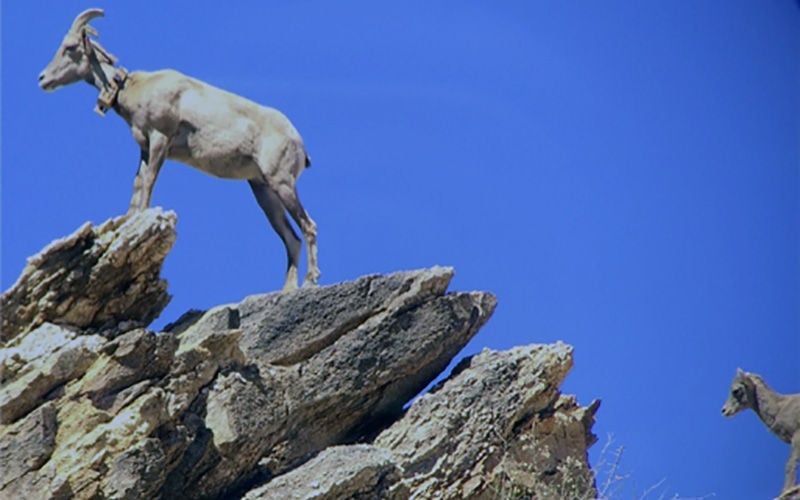Three more bighorn sheep have died in the Catalina Mountains north of Tucson — all of them victims of mountain lions, state wildlife officials say.
Two mountain lions deemed responsible for two of the recent bighorn deaths were tracked down and killed by subcontracted hunters using dogs in the pursuit, said Mark Hart, spokesman for the Arizona Game and Fish Department.
The recent bighorn mortalities, all ewes, include one found dead on April 16, another discovered on April 24 and a third that apparently died on April 25, Hart said.
The mountain lion found to be responsible for the first of the three deaths was killed April 17 by a hunter subcontracted by the Game and Fish Department. The lion associated with the April 25 bighorn death was also tracked and killed. The lion associated with the third death has not been found, Hart said.
People are also reading…
Asked how the hunters determined that the lions killed were the one responsible for the bighorn deaths, Hart said, “As lions often do, it remained in proximity to the remains of the sheep. Lions don’t consume their prey in one feeding” and often linger nearby to eat more later.
Hart said six mountain lions have been killed for preying on sheep since the 2013 beginning of a project to reintroduce bighorns in the Catalina Mountains — an effort to rebuild a herd that disappeared from the range in the 1990s.
Three lions have been killed this year and the other three were killed in previous years, Hart said.
As to why the subcontracted hunter is allowed to use dogs in pursuit of lions when the public is strictly forbidden from bringing dogs into the reintroduction area, Hart said, “Dogs are in use because it’s the most efficient way to do the work. It would be irresponsible not to use the dogs because that’s the surest way to track a lion from the remains of a bighorn.”
The recent bighorn deaths have reduced the number of GPS-collared sheep known to be alive to 38, Hart said. But he said the population might total 80 to 85 sheep including animals released without the tracking collars, those whose collars have dropped off, and those born in the Catalina Mountains.
Opponents of the reintroduction project are calling for an end to the killing of mountain lions.
“This project is a failure. It is time to admit that and save the lions that are just trying to live in the Pusch Ridge Wilderness” of the Catalina Mountains, said Cyndi Tuell, an attorney speaking on behalf of the Friends of Wild Animals group.
“Lions and sheep continue to die in Tucson’s backyard as a direct result of the hubris of the Arizona Game and Fish Department and the members of the advisory committee that rushed to put these sheep on a mountain that cannot sustain them,” Tuell said. “It is shocking that the conservation groups that are part of this project (as members of the advisory committee) are not demanding, loudly, that the lion killing stop immediately.”
Hart said the department has good reasons for authorizing the killing of some mountain lions.
“It’s virtually impossible to reestablish bighorn sheep and pronghorn antelope populations without limited predator management,” he said. “This is very discriminate compared to other methods. We only are seeking lions that kill the sheep.”














